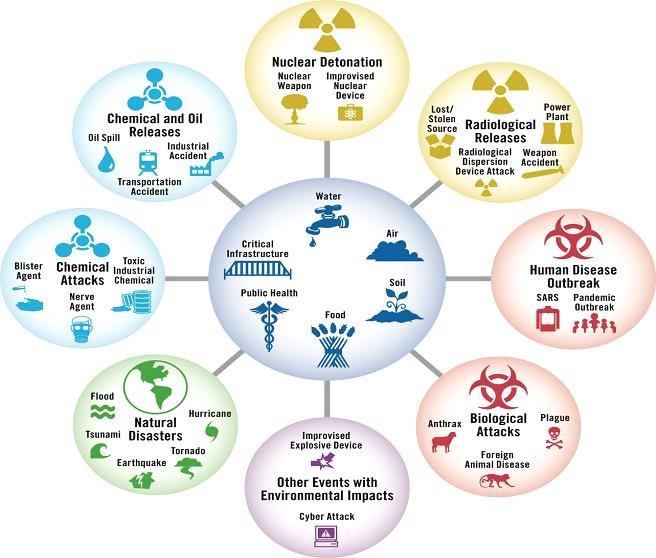An All-Hazards Planning Approach
The following graphic shows that different hazards have similar effects on the environment. Emergency officials should plan for all hazards:

This is a hub and spoke infographic showing what an all-hazards approach entails. In the middle of the graphic are icons for and the words water, air, soil, food, public health, and critical infrastructure, which could be affected by the hazards. The spokes list the hazards and contain icons for them:
- Natural disasters including earthquakes, floods, tsunamis, hurricanes, and tornados.
- Chemical attacks including blister agents, nerve agents, and toxic industrial chemical.
- Chemical and oil releases including oil spills, industrial accidents, and transportation accidents.
- Nuclear detonation including nuclear weapons and improvised nuclear devices.
- Radiological releases including from power plants, weapon accidents, radiological dispersion device attacks, and lost/stolen sources.
- Human disease outbreak including SARS and pandemic outbreaks.
- Biological attacks including anthrax, foreign animal diseases, and plagues.
- Other events with environmental impacts including improvised explosive devices and cyber attacks.
